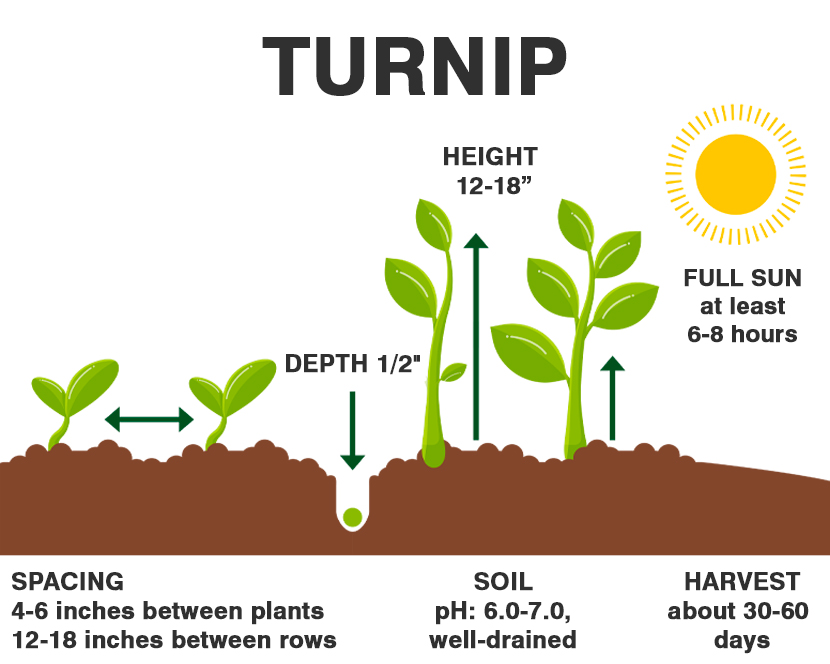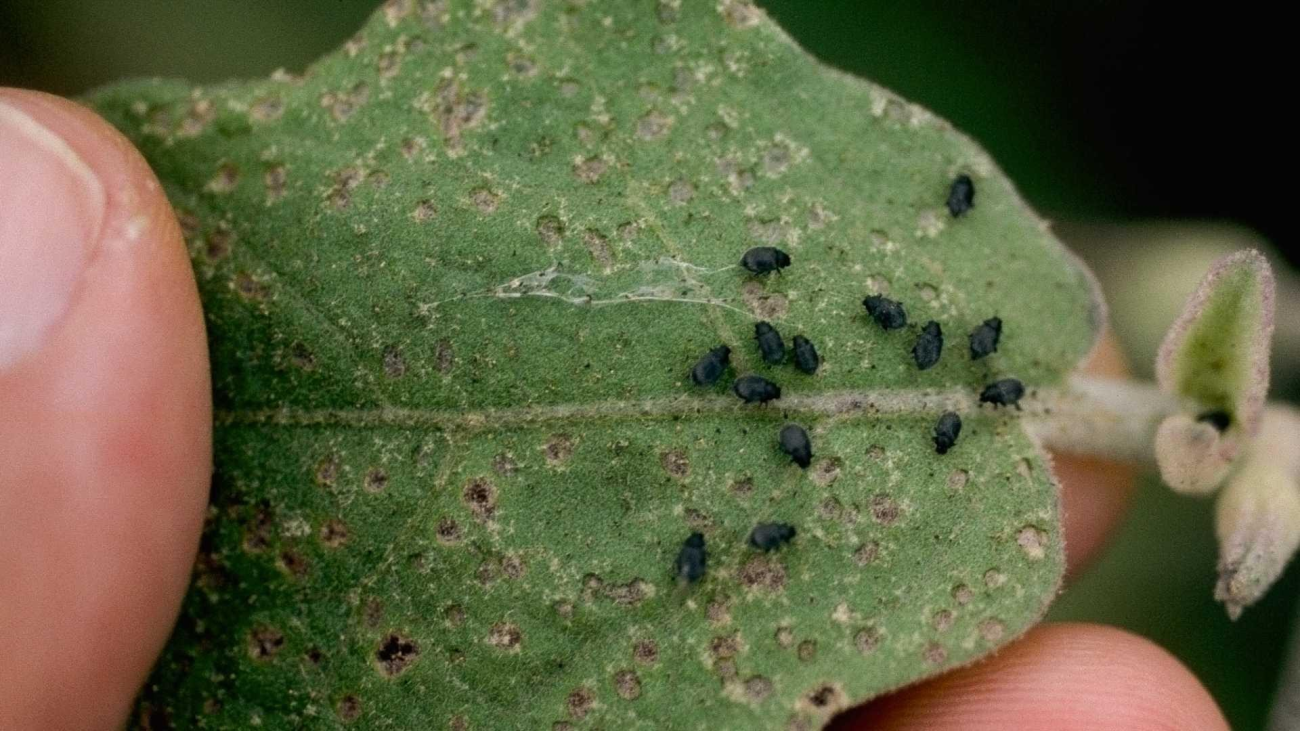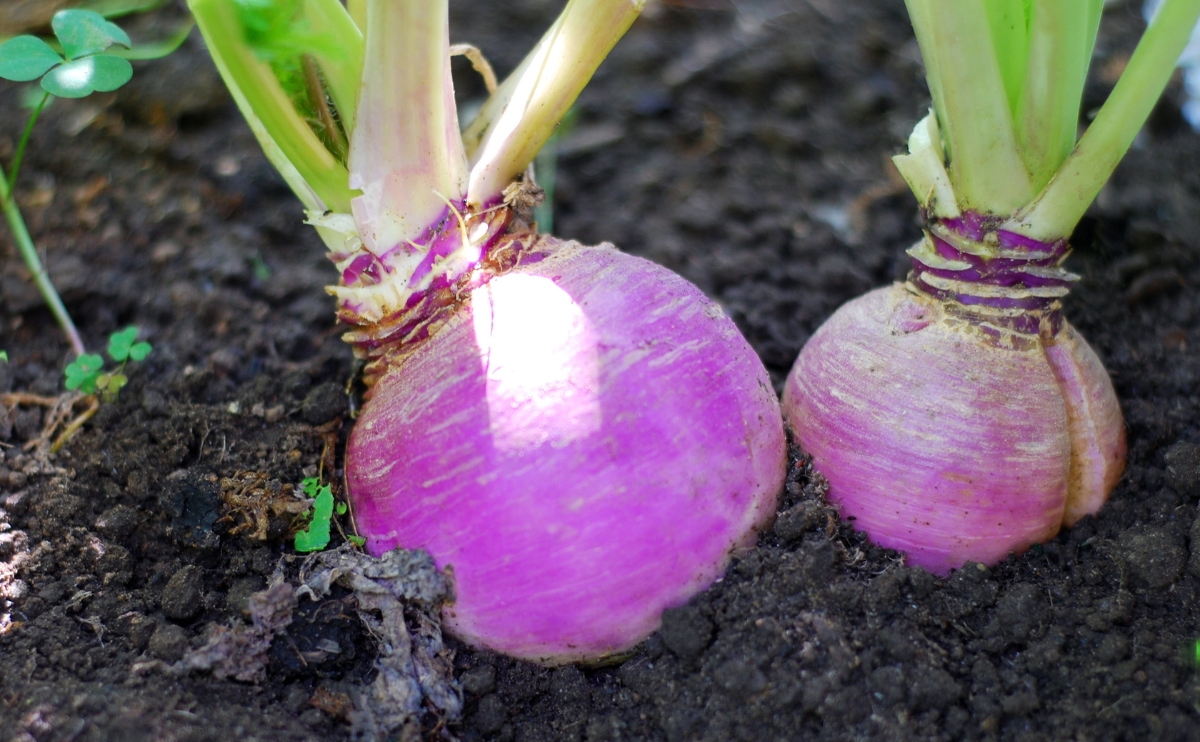Turnips are a versatile root vegetable known for their crisp texture and mildly peppery flavor. They can be grown for both their roots and leafy greens, making them a dual-purpose crop.

Turnips thrive in cool weather and can be planted in both spring and fall for multiple harvests.
| Common Name | Turnip |
| Botanical Name | Brassica rapa subsp. rapa |
| Family | Brassicaceae |
| Plant Type | Biennial vegetable (usually grown as annual) |
| Size | 12-18 inches tall; 6-12 inches spread |
| Sun Exposure | Full sun to partial shade |
| Soil Type | Rich, well-drained |
| Soil pH | 6.0 to 7.0 (slightly acidic to neutral) |
| Hardiness Zones | 10–11 (grown as an annual elsewhere) |
| Native Area: | Europe, Asia |

When to Plant?
This will be determined by your planting zone. There is a final frost date for each area. As a result, you can plan your gardening activities around this date. Check our Frost Dates Across North America: First & Last Frost Dates Chart. However, the date will not be the same for every plant. Turnips grow best in cool weather. For a spring harvest, sow seeds directly into the garden 2-4 weeks before the last frost date. For a fall harvest, plant seeds in late summer, about 8-10 weeks before the first expected frost.
How to Plant
Turnips are usually grown from seeds sown directly into the garden. Here’s how to plant them:
- Seeds: Sow seeds 1/2 inch deep, spacing them 1 inch apart in rows 12-18 inches apart. Thin seedlings to 4-6 inches apart once they are a few inches tall.
- Transplants: Though not commonly used, turnip seedlings can be started indoors and transplanted to the garden.
- Choose a site with well-draining, fertile soil. Turnips prefer full sun but can tolerate partial shade, especially in warmer climates. Ensure the site receives at least 6 hours of sunlight per day.
- Space turnip plants 4-6 inches apart to allow for adequate root development. If you prefer a continuous harvest, sow seeds every 2-3 weeks throughout the growing season.

How to Cultivate
Light – Turnips grow best in full sun but can tolerate partial shade, especially during the hottest part of the day.
Soil – Use well-draining soil enriched with organic matter. Turnips prefer a soil pH between 6.0 and 7.0.
Water – Keep the soil consistently moist but not waterlogged. Turnips need about 1 inch of water per week. Mulching can help retain soil moisture.
How to Harvest
Turnips can be harvested at various stages of growth. For the best flavor and texture, harvest them when the roots are 2-3 inches in diameter. Use a garden fork to carefully lift the plants from the soil. The leafy greens can be harvested when they are young and tender.
Common Pests and Diseases
Flea Beetles (Alticiniola)
Symptoms: Small holes in leaves, stunted growth
Management
Use row covers and apply insecticidal soap.

Root Maggots (Anthomyiidae)

Symptoms: Wilting, yellowing leaves, maggots in the roots
Management
Apply beneficial nematodes and practice crop rotation.


